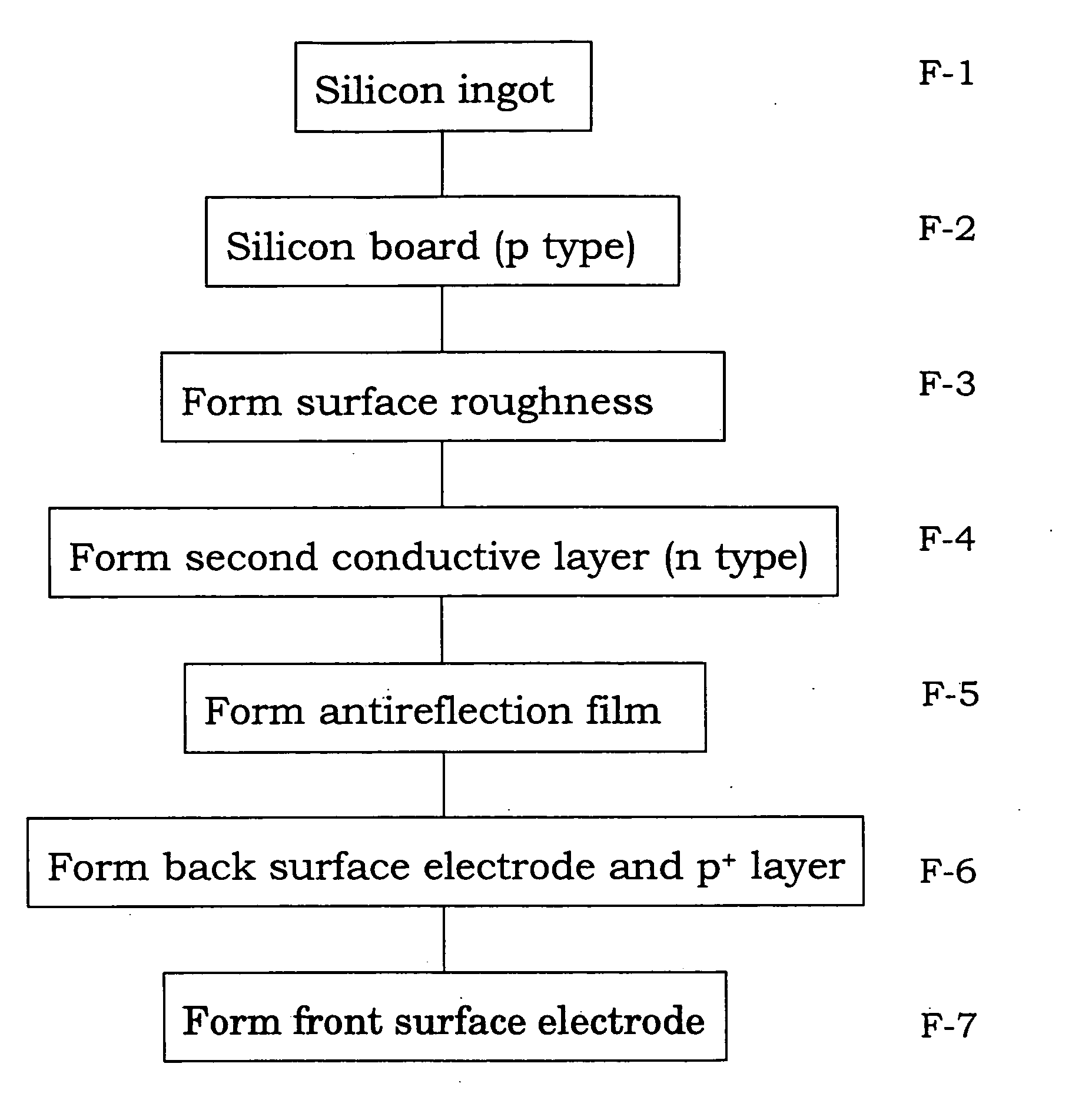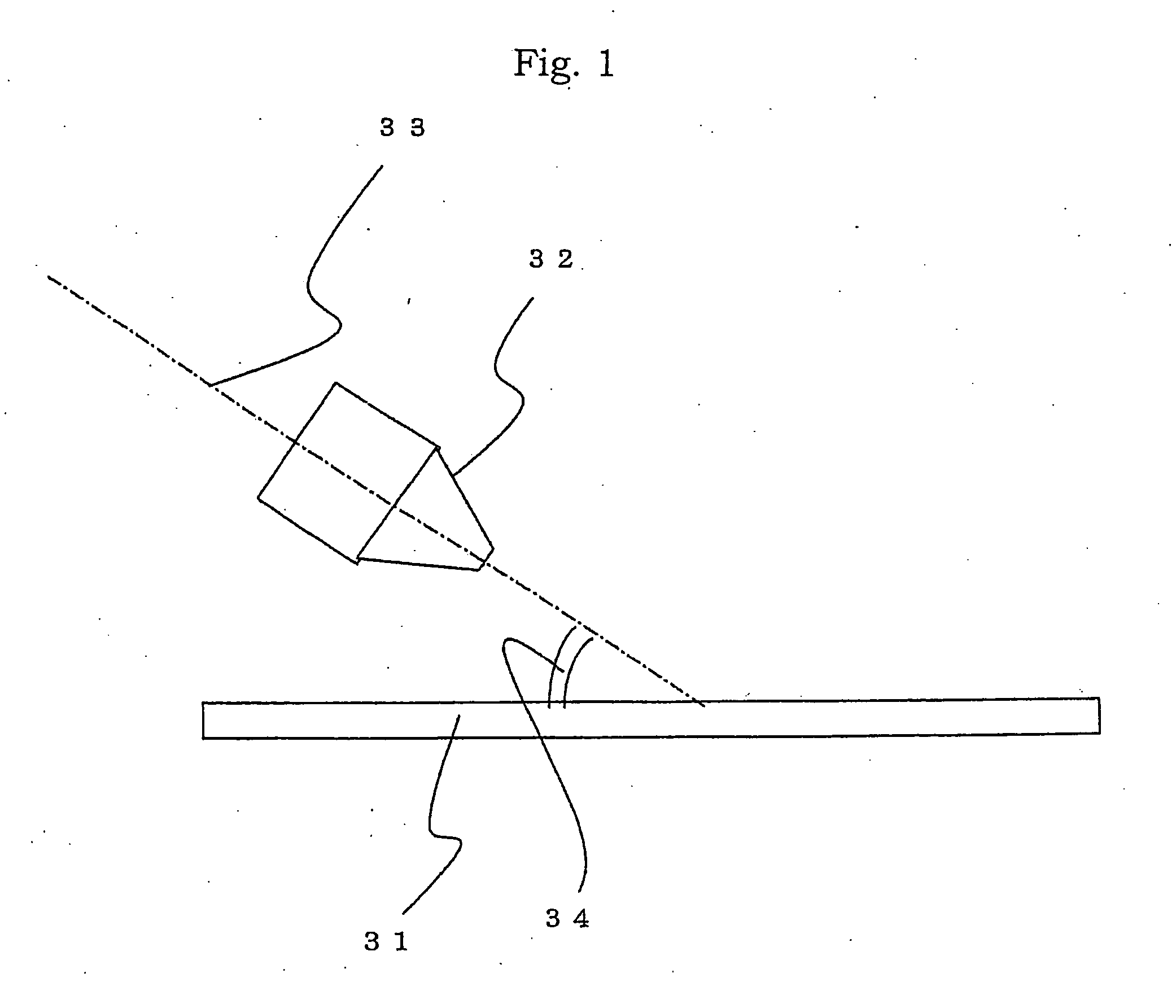Electrode formation method, electrode and solar battery
a solar battery and electrode technology, applied in the direction of basic electric elements, electrical equipment, semiconductor devices, etc., can solve the problems of screen mesh clogging up, inability to obtain inability to achieve a predetermined line width, etc., to achieve high aspect ratio
- Summary
- Abstract
- Description
- Claims
- Application Information
AI Technical Summary
Benefits of technology
Problems solved by technology
Method used
Image
Examples
example 1
[0052] The solar battery cell shown in Example 1 generally has the cross-sectional structure shown in FIG. 2. The manufacturing of this cell was based on the flowchart shown in FIG. 3.
[0053] First, the p type polycrystalline silicon substrate 21 obtained by slicing the silicon ingot and having an outer size of 10×10 cm, a thickness of 0.35 mm and a specific resistance of about 2 Ωcm was prepared. The surface of the silicon substrate 21 was etched by a depth of 20 μm at 80° C. for 10 minutes in a solution obtained by adding 7% alcohol to a 5% NaOH alkaline aqueous solution. Surface roughness was formed simultaneously with removal of a pulverized layer. Although a height of the surface roughness was around 5 μm to 10 μm microscopically, the silicon substrate 21 was flat as a whole.
[0054] Next, the etched silicon substrate 21 was mounted on a jig in an electric furnace at 840° C. in a POCl3 containing atmosphere, and phosphorus ions were diffused onto the silicon substrate 21 for 20 ...
example 2
[0063] In Example 2, manufacturing conditions were the same as those according to Example 1 except that the thickness of the p type polycrystalline silicon substrate 21 was 0.15 mm and the nozzle angle was 20°. As a result, a line width and an aspect ratio were about 110 μm and 0.35 similar to those according to Example 1 (see Table 2).
PUM
 Login to View More
Login to View More Abstract
Description
Claims
Application Information
 Login to View More
Login to View More - R&D
- Intellectual Property
- Life Sciences
- Materials
- Tech Scout
- Unparalleled Data Quality
- Higher Quality Content
- 60% Fewer Hallucinations
Browse by: Latest US Patents, China's latest patents, Technical Efficacy Thesaurus, Application Domain, Technology Topic, Popular Technical Reports.
© 2025 PatSnap. All rights reserved.Legal|Privacy policy|Modern Slavery Act Transparency Statement|Sitemap|About US| Contact US: help@patsnap.com



